Heat Transfer – Conduction
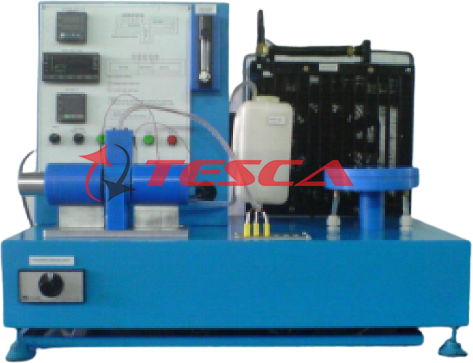
Order Code: 32267
Category: Thermodynamics Lab
Features Heat Transfer is an important field in Engineering and Technology. Proper understanding of the heat transfer phenomena is essential to solve any Research, Development and Design problem involving heat flow. Heat is transmitted t...
SPECIFICATION
Features
Heat Transfer is an important field in Engineering and Technology. Proper understanding of the heat transfer phenomena is essential to solve any Research, Development and Design problem involving heat flow. Heat is transmitted through Conduction, Convection and Radiation. Conduction heat transfer is a prime mode of heat transfer in solids. The ease with which solids conduct heat is determined by the important property called co-efficient of thermal conductivity. Solids having higher values of co-efficient of thermal conductivity are good conductors of heat whereas those with lower values of co-efficient of thermal conductivity are bad conductors or insulators of heat. Study of conduction heat transfer is of interest to the students of several branches of Engineering and Technology including Mechanical, Chemical, Automobile and Aerospace Engineering.
Tesca Conduction Heat Transfer Unit is designed and developed to enable students study the principles of both linear and radial heat conduction. The unit has separate modules for linear heat conduction and radial heat conduction studies and has the provision to conduct various experiments to demonstrate Fourier law of heat conduction. Necessary instrumentation is provided to measure temperature distributions and determine co-efficient of thermal conductivities of varieties of solids. Acquisition of data and analysis of results are through a computer based system.
Important Components and Specifications:
The Conduction Heat Transfer Unit consists of two modules –
(a) Linear Heat Conduction
(b) Radial Heat Conduction.
(A) Linear Heat Conduction Module.
The module has been designed to demonstrate the basic principles of linear heat conduction and to determine thermal conductivities of different heat conductors and insulators. Heat flows in the direction of the length of the test specimen. All sections are thermally insulated to minimize heat losses. The module consists of the following:
Heating Section consisting of 0 - 500W variable power heating element, made of stainless steel, 30 mm diameter, fitted with calibrated K-type thermocouples (2 Nos.) and thermostat.
Cooling Section with variable cooling water flow rate with Flow Regulator. Flow (max.): 2 liters/minute. Made of stainless steel, 30mm diameter, fitted with calibrated K-type thermocouples (2 Nos.). Provision made for measurement of water temperatures at inlet and outlet.
Testing Section (intermediate section) having provision for easy removal and fixing of test samples.
Test Samples. 30mm long. 3 Nos. of conducting materials (brass, aluminum and copper) and one of insulating material (wood and fiber reinforced plastic). One sample is instrumented with thermocouples spaced equally along the length (4 Nos.) to study temperature distribution. The module can accommodate test sample of suitable sizes which are of interest to the user.
Thermal paste is provided to study contact resistance.
Rotameter to measure cooling water flow rate.
Temperature sensor to measure cooling water exit temperature.
Digital power meter to measure power input to the heater element.
Computer based data acquisition and data analysis. OPTION
Measurements:
Temperatures in heating section, cooling section, test sample, temperature rise of cooling water, cooling water flow rate and power input to the heater element.
(B) Radial Heat Conduction Module.
The module has been designed to demonstrate the basic principles of radial heat conduction and to determine thermal conductivity of the disk material. The arrangement consists of a circular disc with temperatures measured at different radial positions (6 locations) using thermocouples. Heat flows radially outwards from the center of the disc to the periphery. The solid disc of the material is heated at the center and cooled at the periphery by cooling water jacket to establish a radial temperature gradient and to obtain radial flow of heat by conduction. All sections are thermally insulated to minimize heat losses. The module consists of the following:
Brass disc 120mm diameter and 5mm thick.
Heater element, 0 - 500W variable with thermostat.
K-type thermocouples (6 Nos.)
Cooling water supply, 0-2 liters/minute with flow control valve.
Rotameter to measure cooling water flow rate.
Temperature sensor to measure cooling water exit temperature.
Digital power meter to measure power input to the heater element.
Computer based data acquisition and data analysis.
Measurements:
Temperatures in the brass disc at 6 locations, temperature rise of cooling water, cooling water flow rate and power input to the heater element.
Experiments
(A) Linear Heat
1. Study of heat flow rate through solids and comparison with Fourier law of linear heat conduction.
2. Determination of co-efficient of thermal conductivity of conductors and insulators.
3. Measurement of temperature distributions in linear heat conduction.
4. Measurement of contact resistance and its effect on heat transfer.
5. Study of application aspects of insulators.
(B) Radial Heat Conduction
1. Study of the Radial heat conduction problem and comparison with the Fourier law of heat conduction.
2. Measurement of temperature distribution for radial steady state heat conduction.
3. Determination of thermal conductivity of disc material.
Services required
1. Single phase mains electrical supply: 220-240 V, 50Hz.
2. Cold water supply, 2 liters/minute.
Overall dimensions
1. Linear Heat Conduction Module : H: 0.3m, W: 0.5m, D: 0.25m
2. Radial Heat Conduction Module : H: 0.25m, W: 0.4m, D: 0.2m

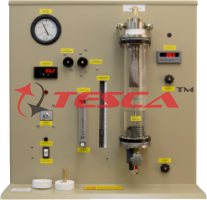
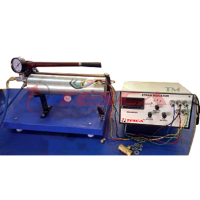
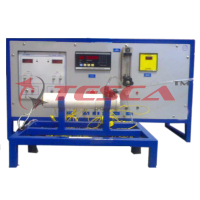
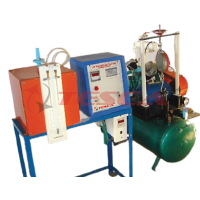
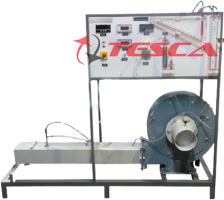
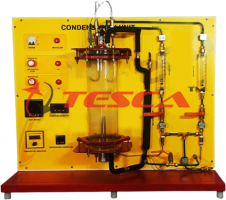
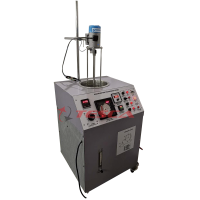
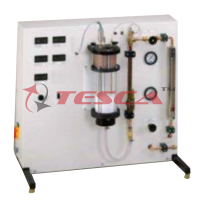
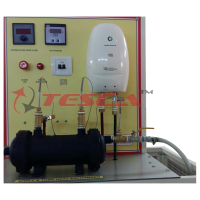

 91-9829132777
91-9829132777